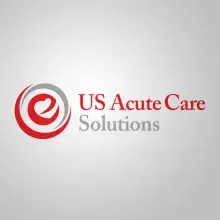Science vs. Art In Medicine And The Use Of Medical Scribes
Are we losing the art of medicine as science advances?
One of the challenges we constantly face in delivering clinically compassionate care is to continue to ensure that appropriately skilled people are performing critical jobs. Just as important is to continue remove the non–essential tasks from those critical individuals so they may focus on the patients we serve. Some people use different business processes such as Six Sigma or LEAN to constantly evaluate job functions and make them more efficient. Reducing wasted effort is hailed as the key to making the difference in efficiently (and profitably) delivering a product or service in the marketplace.
I am part of a CEO group thorough my membership in Vistage. It is a group of business CEOs from disparate industries who meet once a month to discuss business challenges and share ideas on how to improve our businesses and live more productive lives.
My group is always amused when I tell them the more technology we add to medicine, in the form of EMRs (electronic medical records), the more inefficient I have become as the provider. I am reduced to a computer data entry operator as I input clinical information or search for patient results from lab and x-ray so I can make decisions on patient dispositions. This occurs while patients continue to stack up and wait for me, and my fellow providers, to continue to receive care. The same can be said for the nursing staff as they have become computer “slaves” tied to the COWS (computers on wheels) to input more and more data, which takes them further and further away from direct patient care.
Of course, the march of technology will continue and it has led to stunning advancements in medicine as well as hospital productivity. Numerous examples exist such as digitized radiology systems and electronic medical records available at the touch of a button. The ability to perform a simple bedside exam with a portable sonogram machine to diagnose a rupturing abdominal aortic aneurysm was unheard of 10 years ago. The technology dramatically impacts patient care. But there is a constant balancing of the “art” and “science” of medicine.
The solution in this high tech world? Add more people to the equation! I know it makes no sense that the more technology we infuse the more people we need to carry out some tasks but for our group it does makes sense. Over the last several months we have begun the use of medical “scribes” at Meritus Medical Center in Hagerstown, MD. Scribes are individuals who are attached to the doctor’s hip and record the patient encounter, enter the information into the computer, search and track results and alert me when all the information has returned so that I may make a final disposition on a patient. In my personal experience, scribes have made me 20-25% more efficient (as measured by patients I treat per hour) than before I had a scribe. This is also the typical increase (20%) in productivity that has been seen by Scribe America (who we engaged to provide service in our locations).
Scribes are not for everyone, but I can’t help but think that they will be a viable solution for groups that are searching to improve provider productivity. This is especially true when faced with the additional challenges of being unable to add more staffing due to recruitment challenges or financial considerations. One of the most unexpected benefits of a scribe, for me, has been the ability to be completely focused on the patient during my history and physical exam. I do not need to constantly change focus from the patient to the piece of paper on my lap to furiously write down all the essential documentation elements so the chart can be appropriately coded, and I can be appropriately paid for the work I do. I can sit next to the patient and just talk for an uninterrupted few minutes while we have a conversation about why they are here.
Perhaps some of the art of medicine may be re-found because of the person sitting over my shoulder or across the bed capturing the critical elements of the patient–doctor exchange. Art and science provide an interesting contrast in the world of healthcare. Sometimes they are at odds and competing for resources. I don’t know the answer but what I do know is that we are going to have to explore new efficient ways to provide care while simultaneously finding way to improve the human component of how that care is delivered. As the use of technology expands and becomes yet more integrated into the patient experience, those most successful will be the individuals and organizations which learn how to elevate the human element while the march of new technology continues in the background.

